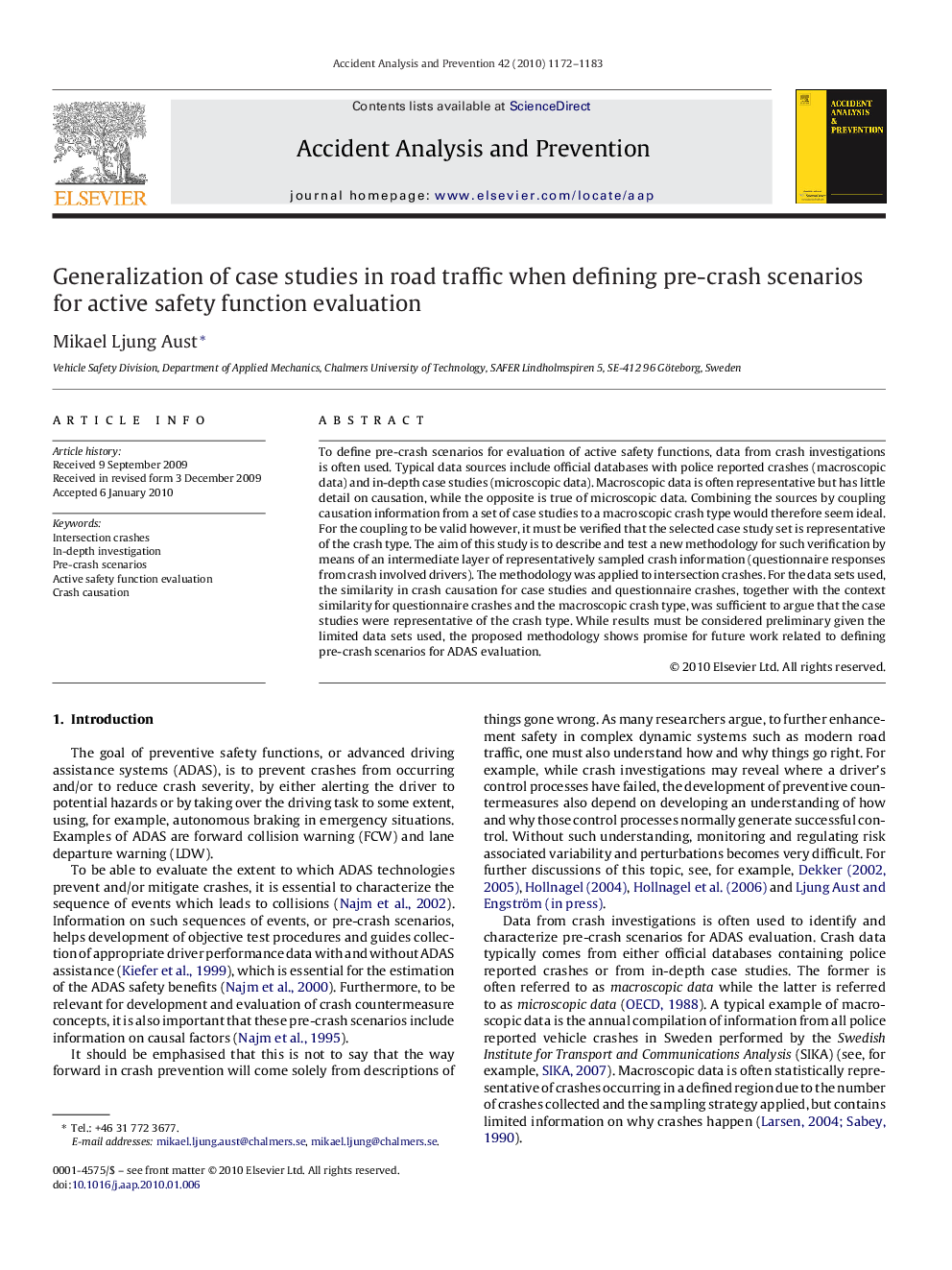| Article ID | Journal | Published Year | Pages | File Type |
|---|---|---|---|---|
| 573048 | Accident Analysis & Prevention | 2010 | 12 Pages |
To define pre-crash scenarios for evaluation of active safety functions, data from crash investigations is often used. Typical data sources include official databases with police reported crashes (macroscopic data) and in-depth case studies (microscopic data). Macroscopic data is often representative but has little detail on causation, while the opposite is true of microscopic data. Combining the sources by coupling causation information from a set of case studies to a macroscopic crash type would therefore seem ideal. For the coupling to be valid however, it must be verified that the selected case study set is representative of the crash type. The aim of this study is to describe and test a new methodology for such verification by means of an intermediate layer of representatively sampled crash information (questionnaire responses from crash involved drivers). The methodology was applied to intersection crashes. For the data sets used, the similarity in crash causation for case studies and questionnaire crashes, together with the context similarity for questionnaire crashes and the macroscopic crash type, was sufficient to argue that the case studies were representative of the crash type. While results must be considered preliminary given the limited data sets used, the proposed methodology shows promise for future work related to defining pre-crash scenarios for ADAS evaluation.
